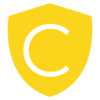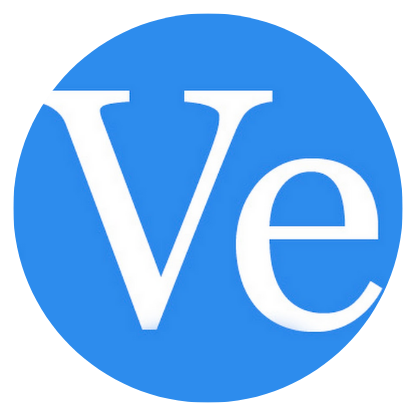How Much Information? | Veritasium
Reference: Veritasium. (2014, July 03). How Much Information? [Video]. YouTube.
We Make Your Education Count

Get the Credit You Deserve and Become the Most Attractive Job Candidate by Earning and Posting A+ Badges to Your Linkedin Profile.
Sign Up to Get Started at Accredicity
|
Uncover the fascinating truths behind how much information is in languages, computers, and even our bodies! This YouTube video by Derek Muller of Veritasium explores the concept of "How Much Information" is contained in our everyday language. Muller looks at how much information is contained per syllable in Spanish, how many letters can be read at once in Chinese and English, how much information is contained in a single binary digit (1 bit), how many bits of information is necessary to encode the entire English alphabet, and even how much information is contained in our genetic code. He then compares the amount of information per minute in Spanish and English, the reading rate of Chinese and English, the amount of information in our DNA, and the amount of data contained in a single video file. By the end of the video, Muller reveals that what limits the speed of our communication is not language but our cognitive ability to process information. Learning Outline1. Spanish syllables contain less information than English syllables. Instructional ContentHave you ever noticed that Spanish speakers seem to communicate faster than English speakers? While it may sound like Spanish is spoken faster than English, linguistic analysis has shown that the amount of information per minute is actually almost identical. But what about written language? Chinese characters appear to fit better into our central visual field than the English language. However, experiments show that English readers can perceive more letters at once compared to Chinese readers, but Chinese characters are denser in meaning than English letters, and so both languages have the same reading rate of 380 words equivalent per minute. So how can you quantify information? The smallest amount of information you can have is the answer to a yes/no question, which can be represented with a one or a zero, also known as a binary digit. To represent the 26 letters of the English alphabet requires five bits of information, and to represent all symbols (including lower case, punctuation, special characters, and numbers) requires seven bits of information. Your entire genetic code is contained in a sequence of four molecules, which can be encoded by two bits of information. Multiplying this by the six billion letters of your genome and dividing by 8 bits per byte, yields 1.5 GB of information. This means that all of your genetic code could fit on a single DVD with room to spare. Video can contain a lot of information. To specify the colour of each of two million pixels 30 times a second for a video would require 100 gigabytes of information. However, you can watch the video in HD with just a thousandth of that amount, thanks to the redundancy of video. You share 99.9% of your genetic information with everyone else on Earth, meaning that only one part in a thousand is unique. This means that the information that makes you you could be stored in less than a megabyte. On the other hand, the digital information in the world is estimated to be equal to 40 zettabytes of information in 2020. This video has shown us that there is a lot more to information than meets the eye. Language, genetics, and video are all forms of information that can be processed and stored in different ways. However, no matter what form information takes, it is always a physical thing that can be measured and detected. Cognition
|

Have you ever noticed that Spanish speakers sound like they're talking really fast? It's because they have more syllables per minute than English speakers, but each syllable contains less information. Chinese characters look like they should be read faster than English, but English readers can actually process more letters at once. In the end, both languages have the same rate of information communicated per minute. In fact, the same is true for all communication- the limit on how quickly we can process information is not language, but our own brains! It's like a game of Tetris- you can only fit so many pieces in the same amount of time. Video Quotes1. "You could in principle figure out exactly what we've said here, today. Woah." - Derek Muller Related Quotes"We have this incredible abundance of information that is available to us now, and of course, with great power comes great responsibility." -Safiya Umoja Noble "What happens in an environment of abundance is that we have to make choices about what we pay attention to and what we don't." -Safiya Umoja Noble "Our digital lives are incredibly powerful and incredibly dangerous." -Ramesh Srinivasan Competencies1. Analytical Literacy Learning Outcomes1. Remember: Students will be able to identify and explain the similarities and differences between Spanish and English in terms of syllable rate, number of letters per word, and amount of information per minute. 2. Understand: Students will be able to comprehend the concept of a binary digit, binary code, and ASCII code, and how they are used to represent information. 3. Apply: Students will be able to calculate the estimated amount of information required to represent their genetic code, the amount of information contained in their body, and how much digital information will be in the world by 2020. 4. Analyze: Students will be able to compare and contrast how information is communicated through verbal and written language, and explain how redundant information allows for a large video file to be compressed into a small file size. 5. Evaluate: Students will be able to make judgments and assess the implications of the physicality of information, and how it can be traced and extrapolated even after it has passed through the air. 6. Create: Students will be able to synthesize the ideas presented in the video and transcript to generate a plan of action for further research into the topic of information, language, and cognition. Sample AnswersI learned that Spanish syllables contain less information than English syllables, but the amount of information per minute is almost identical. I also learned that English readers can perceive seven to eight letters at once compared to just 2.6 characters for Chinese and that the smallest amount of information is the answer to a yes/no question, which can be represented with a one or a zero. Finally, I learned that the entire genetic code of a person can be stored in 1.5GB of information, which is a tiny fraction of the estimated 60 zettabytes of information contained in the body. Derek MullerDerek Muller is the creator and host of the popular science YouTube channel Veritasium, which has over 8 million subscribers. He holds a PhD in physics from the University of Sydney and has authored several books on science education. He is an expert on How Much Information because he has studied and reported on the vast amount of information available in the digital age and how it is collected, stored, and used. He is also a professor of science communication at the University of South Wales. Derek Muller is associated with Veritasium, which is a YouTube channel focused on science and education videos. Veritasium Learning DesignThese three competencies are important to learn for the course because they can help students develop a deeper understanding of the subject matter, become more analytical thinkers, and gain the skills necessary to better navigate the changing world. Analytical literacy helps students develop the ability to think critically, analyze and evaluate information, and draw logical conclusions. Information literacy helps students become more knowledgeable about how to access, evaluate, and use information. Cognitive flexibility helps students become more creative thinkers and better problem-solvers. A variety of pedagogical approaches can be used to help students develop these competencies. For example, flipped classrooms can be used to help students become more engaged with the material. Students can also use problem-based learning to practice and apply their knowledge. Other approaches such as case studies, simulations, and projects can also help students gain a deeper understanding of the material. Additionally, students can be given the opportunity to create their own learning experiences, such as creating digital portfolios or researching a topic of their choice. AssessmentQ. What is the smallest amount of information that can be expressed? Answer: D. Seven bits of information QuestionsCommon Hypothetical Questions: Real-Life Application Questions: KeywordsSEO Optimize Keywords: "Information Interchange, American Standard Code, Spanish Syllable Contains, Cognitive Ability Process, English Alphabet Requires, English Readers Perceive, Digital Information World, Video Compression Algorithms, Floppy Disk Storage, Genetic Code Sequence. Facts1. Spanish syllables contain less information per minute than English syllables, despite being spoken faster. Trends1. Develop an app that translates Spanish audio into English text in real-time. SourceThis learning instructional guidance was formulated using the GPT-3 language model created by OpenAI. ShareDid you know that Spanish and English convey the same amount of info/min? Chinese characters are denser, but English readers can perceive more at once. We can represent info w/ binary digits, and encode English alphabet w/ 5 bits. Your entire genetic code can be stored on 1 DVD! #science #genetics #language #information #wow 🤯 @Accredicity |








 10 Creds - Cognition
10 Creds - Cognition



